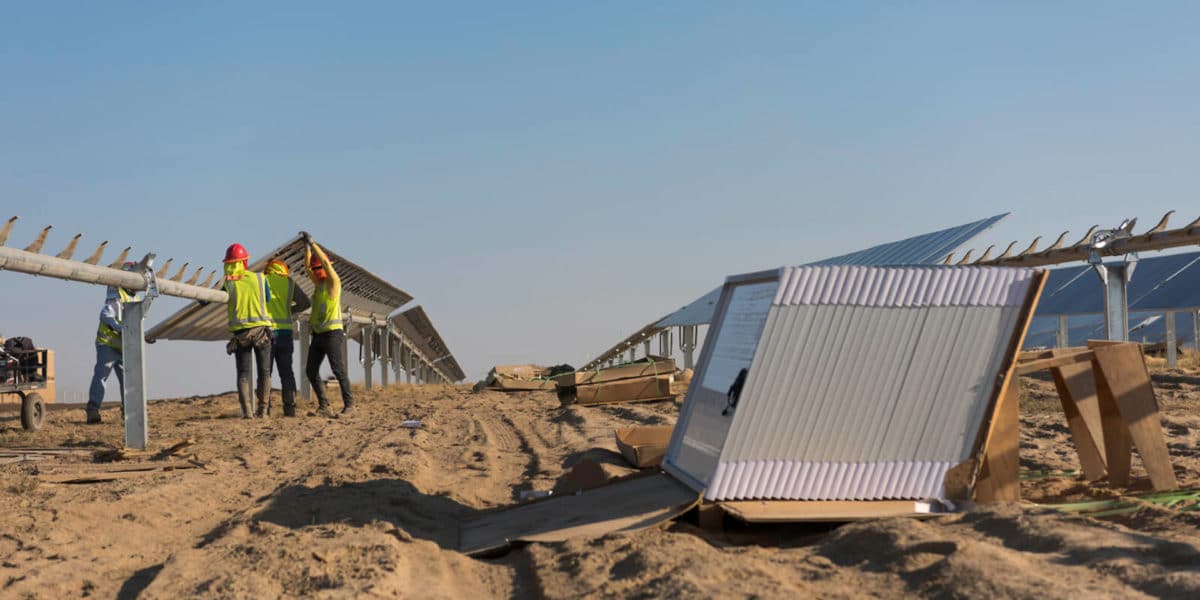A presidential candidate is pushing $300 billion per year of U.S. government investment – with hopes to pull in a complementary $600 billion per year in private investment – to aim for $9 trillion in investment over the course of a decade. Sounds like a lot of money until we think about the United States subsidizing fossils to the tune of $649 billion a year, and estimates that the U.S. gross domestic product could fall by 10% – more than $2 trillion per year – due to costs associated with climate change.
Jay Inslee has introduced his Evergreen Economy Plan (pdf) as part of his presidential election campaign. The plan has five major planks that include many individual legislative actions.

The first plank, Igniting America’s Clean Energy Economy, is partially an extension of Inslee’s already introduced 100% Clean Energy for America Plan which aims to achieve 100% clean electricity, 100% zero-emission new vehicles and 100% zero-carbon new buildings in 2035, 2030 and 2030, respectively – with a specific 10% of total electricity demand being generated by distributed solar energy.
Also within this plank is the creation of a $90 billion Clean Energy Deployment Authority to help deploy in underserved regions, tax credits for efficiency upgrades, financing for utility managed on-bill investments, school upgrades, and training programs. As well, a grant program in-lieu of current tax credits for wind and solar, and a requirement of all federal agencies moving toward 100% clean energy.
The second plank, Building Sustainable & Climate-Safe Infrastructure, focuses on upgrading all vehicles to zero emissions, upgrades of public transportation, performance rules accounting for life-cycle analysis, rail electrification, transmission infrastructure upgrade incentives, clean water for all programs, public housing upgrades, and a focus on climate resistance from US public lands.
Third third plank, Leading the World in Clean Manufacturing, seeks to support American manufacturing via increasing production and energy efficiency; cutting costs and waste; deploying new leading-edge technologies and harnessing new energy sources; and reducing climate pollution. Inslee sees an investment opportunity of approximately $2 trillion in public and private capital during the next decade to “deploy existing technologies and proven strategies”.
The plank includes an Advanced Energy Manufacturing Tax Credit, federal investment in manufacturing of zero emission vehicles, a Clean Cars for Clunkers program, a federal government “Buy Clean” program, cracking down on “super pollutants”, a “Top Runner” program to drive industry standards higher, and support of various global trade organizations to help U.S. companies export their wares.
The fourth plank, Investing in Innovation & Scientific Research, wants to put $35 billion year into various research areas including:
advanced renewable energy, energy efficiency, a high-voltage transmission, grid modernization, next-generation battery storage; as well as exploration of potential solutions, such as advanced small modular reactors, hydrogen, enhanced geothermal, and more.
The research will also look at next generation transportation technologies, industrial and agricultural emissions challenges, further climate research, and supporting of climate and STEM education starting in k-12, into secondary education and the work pipeline.
The final plank, Ensuring Good Union Jobs with Family Supporting Wages & Benefits, seeks to support workers impacted by our shift from fossils toward clean energy with a “GI Bill” to retrain and support the heath challenges of fossil employees, increasing the right to organize and collectively bargain for these jobs by repealing “Right to Work” laws, building career ladders through apprenticeships and skills training, making sure workers are paid at least a living wage, and generally supporting the communities in which these projects are built.
Interestingly, none of Inslee’s plans include a carbon tax, which has failed twice to pass in his home state of Washington.
This content is protected by copyright and may not be reused. If you want to cooperate with us and would like to reuse some of our content, please contact: editors@pv-magazine.com.









By submitting this form you agree to pv magazine using your data for the purposes of publishing your comment.
Your personal data will only be disclosed or otherwise transmitted to third parties for the purposes of spam filtering or if this is necessary for technical maintenance of the website. Any other transfer to third parties will not take place unless this is justified on the basis of applicable data protection regulations or if pv magazine is legally obliged to do so.
You may revoke this consent at any time with effect for the future, in which case your personal data will be deleted immediately. Otherwise, your data will be deleted if pv magazine has processed your request or the purpose of data storage is fulfilled.
Further information on data privacy can be found in our Data Protection Policy.